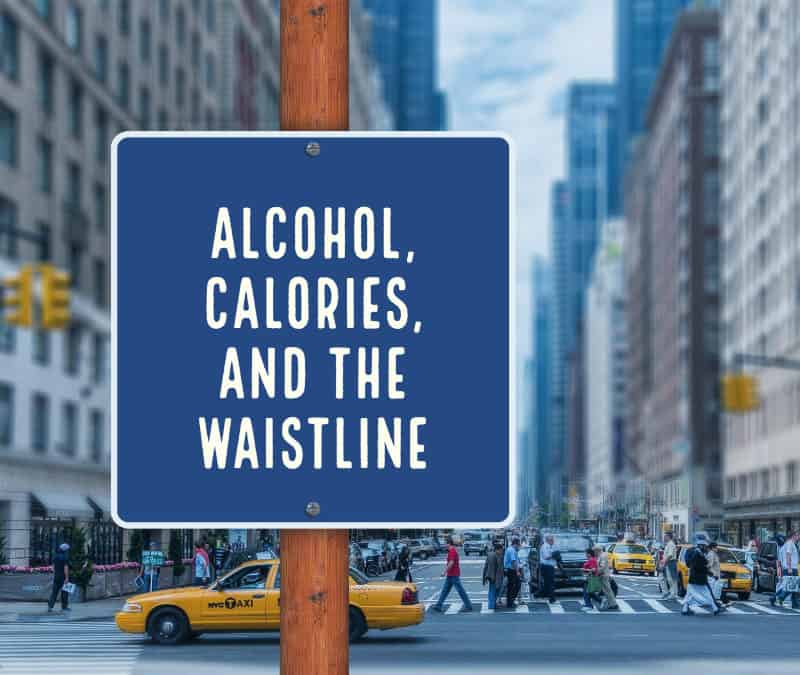I drank a lot of alcohol. Alcohol caused a lot of damage in my life. Was any of it good? Was I able to at least get some nutritional value from $14 beer night? Well, let’s take a look.
Alcoholic beverages primarily consist of water, pure alcohol (chemically known as ethanol), and variable amounts of sugars and carbohydrates; their content of other nutrients, proteins, vitamins, or minerals is usually insignificant. Because they provide almost no nutrients, alcoholic beverages are considered “empty calories.” It’s safe to say a Twinkie has more nutritional value than any alcoholic drink, and it’s common knowledge that Twinkies are terrible for us. The good news is none of us lack any dietary components by not drinking. Alcohol is still shit.
Let’s talk calories for a second. 1 gram of alcohol contains 7 calories compared to 4 calories per gram of proteins and carbs, and 1 gram of fat contains 9 calories. Again, those are 7 hollow calories because the body never uses them.
Let’s find out what these calories are doing to us over the long haul.
1 12 oz. can of beer = 154 calories. 1 glass of wine around 125 calories and 1 whiskey coke has 180. Let’s average the three and use 153 calories per drink. Let’s say we average 5 daily drinks which equates to 765 meaningless calories per day. 5,355 per week and 278,460 per year. 1 pound of fat is roughly 3,500 calories, so this is close to 80 pounds of excess garbage the body must deal with.
Another snippet to drive this point home, 1 pint of beer contains roughly the same number of calories as a slice of pizza. But it’s not even apples to apples, because even though the slice of pizza isn’t the healthiest option, the pizza still contains some vitamins, minerals, and calories the body can use for energy. A pint of beer, not so much. If we average 4 pints a day, this is 1,460 slices of pizza per year, and I hope there’s at least pineapple on that pizza. I know I just lost some readers with that pineapple comment.
The human body is impressive, but it does not digest the calories from alcohol efficiently. What does efficiently burn alcohol? That would-be machines, cars, airplanes, motorcycles, generators, you get the point. The metabolism of alcohol is a complex, multi-stage process that takes place mostly in the liver and kidneys, not in the intestines, where normal digestion occurs. More significant to the current discussion, alcohol is almost never fully metabolized, but instead excreted as acetic acid, because it’s a toxin that the body wants to get rid of. When we binge drink, some of this is permanently deposited in the brain and stored as acetaldehyde.
Let’s talk about timing and when these calories are burned.
Alcohol temporarily keeps your body from burning fat, explains Dr. Pamela Peeke, author of the book “The Hunger Fix.” The reason is that your body can’t store calories from alcohol for later use, the way it does with food calories. For example, when we consume something high in calories like a hamburger, the body will way say, whoa, this is a lot of calories, this is more than I can handle at this moment, I’ll save some of this for later. The body can’t do this with alcohol. So when you drink, your metabolic system must stop what it’s doing (like, say, burning off calories from your last meal) to get rid of the booze. “Drinking presses ‘pause’ on your metabolism, shoves away the other calories, and says, ‘Break me down first!'” Peeke explains. The result is that whatever you recently ate gets stored as fat. What’s worse: “Research has uncovered that alcohol especially decreases fat burn in the belly,” Peeke adds. “That’s why you never hear about ‘beer hips’ — you hear about a ‘beer belly.'”
Why do we get uncontrollable hunger when we drink?
Alcohol impairs inhibitory control, which leads people to eat more. There is evidence that alcohol can influence hormones tied to feeling full. For example, alcohol may inhibit the effects of leptin, a hormone that suppresses appetite, and other hormones that inhibit food intake. According to one study, neurons in the brain that are generally activated by actual starvation, causing an intense feeling of hunger, can be stimulated by alcohol. Bring it on 2 am Taco Bell run.
Let’s talk about a decreased appetite malnutrition.
Stay with me for a second. Over time, chronic alcohol abuse and alcoholism can take a severe toll on a person’s appetite and nutrition levels. Alcohol inhibits the breakdown of nutrients into usable molecules by decreasing secretion of digestive enzymes from the pancreas. Alcohol impairs nutrient absorption by damaging the cells lining the stomach and intestines, and disabling transport of some nutrients into the blood. Also, nutritional deficiencies themselves may lead to further absorption problems. For example, folate deficiency alters the cells lining the small intestine, which in turn impairs absorption of water and nutrients, including glucose and sodium.
The NIAAA reports, “Even if nutrients are digested and absorbed, alcohol can prevent them from being fully utilized by altering their transport, storage, and excretion.”
After a while, the body, instead of working overdrive to properly digest what we consume, it hits the off switch on the appetite. I experienced this after about 10 months into owning my bar in Spain. At first, I would make a late-night stop at the pizza shop, but eventually, I found myself forcing calories into my body. I had entered the malnutrition phase of the addiction cycle. I found that it took about a week for my appetite to return once I quit drinking.




I write this as an alcoholic with three years sobriety, but I must ask the question, if alcohol is so terrible for the body, why does the scientific medical research show that people who have one or two drinks per day are healthier and live longer than people who don’t drink at all?
That’s simply not true. Even one drink per day is toxic. The alcohol industry and segments of the medical community have cherry picked data and contend that drinking in moderation is good for the heart. Although it sounds good, a lifestyle of abstinence has more positives than a lifestyle of drinking in moderation. Please don’t be fooled by false data and false prophets. And remember, we all live in an alcohol-friendly universe. Non-drinkers are in the minority.
A beer has 140 calories (approximately) @ 5% alcohol by volume. This equates to roughly a half gram of alcohol. The rest is some other forms of mostly carbohydrates since there is no protein or fat. So, the empty calories should just be the alcohol right? 3.5 calories per beer of empty calories. The rest should be absorbed as normal usable (albeit non-nutritional) carbs.